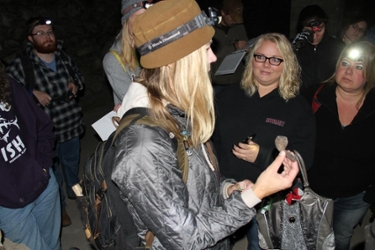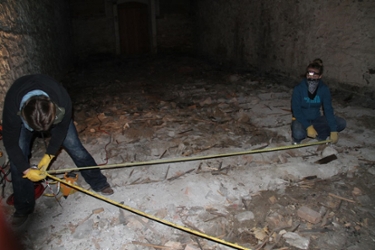The Montana Anthropogenic Research Cooperative has been working with graduate students, Dr. Kelly Dixon's Archaeological Survey class, the Missoula Historic Preservation Commission, and local business owners to conduct an urban archaeological survey to discover evidence of Missoula’s historic underground landscape. By examining archival, architectural, and archaeological evidence, as well as delving into local collective memory, the Missoula Historic Underground Project seeks to provide systematic, fact-based documentation to aid in understanding the physical remains of Missoula’s underground landscape. This study of Missoula’s subterranean archaeological features includes analysis and inventory of steam tunnels, sidewalk vaults (sometimes referred to as “voids”), and a mix of mundane and clandestine basement spaces.
- Steam tunnels are tunnels that contain steam pipes or are indicated on the city steam tunnel map. Although there are stories of a network of beneath the city streets, we have not located any tunnels other than the steam tunnels.
- Sidewalk vaults or sidewalk voids are particularly significant as they represent some of the more mundane realities (i.e. storage) of sensationalized underground features. Unfortunately, the bulk of sidewalk vaults with doorways have been sealed off and many of the vaults themselves have been filled in due to safety and structural concerns.
- Basement spaces are subterranean spaces containing archaeological or architectural features. Of particular interest are spaces that connect to steam tunnels, sidewalk vaults/voids, or where arched or non-arched doorways have been found. While the basement spaces themselves are not unusual, particularly in an urban business district, the features consistently found within them are of interest, especially those with doorways that led into rooms under the sidewalks.
|

